What is three percent theory? How does it apply to inshore fishing and, most importantly, how can it help you catch more speckled trout?
More...
Without a doubt, finding fish is the biggest problem we face as inshore anglers.

My "go to" strategy used to be "find the most, easiest-to-catch fish" by using the Louisiana Hustle, or covering a lot of water as quickly as possible:
- Only catching a few? Cover more water until you find a spot that has more.
- Fish are being finicky? Cover more water until you find fish that aren't.
And on and on.
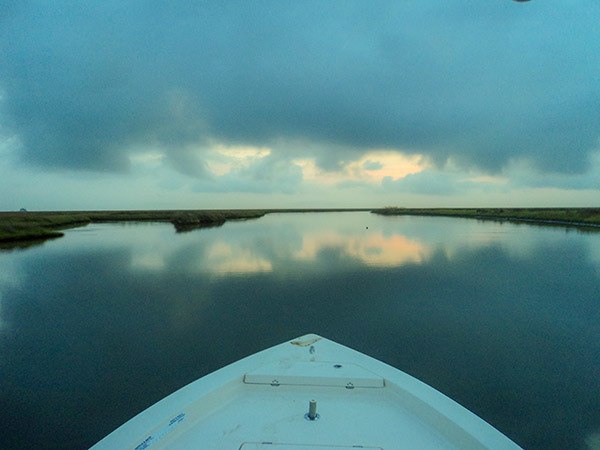
No screwing around, get to where fish are eating up!
Ultimately, this strategy worked and we caught good boxes of speckled trout and redfish to show for it.
But I was making the mistake of only catching one kind of fish, and passing up all the others.
You can categorize fish by the kind of lure they are best caught on.
If all you ever throw is Lure X, then the only fish you will catch are "Lure X fish".
You will never catch the Lure Y or Lure Z fish, the kind of fish you're passing up in your search for those best caught on Lure X.
Years ago I used mostly live shrimp on an Inshore Rig to put nice fish on the cleaning tables.
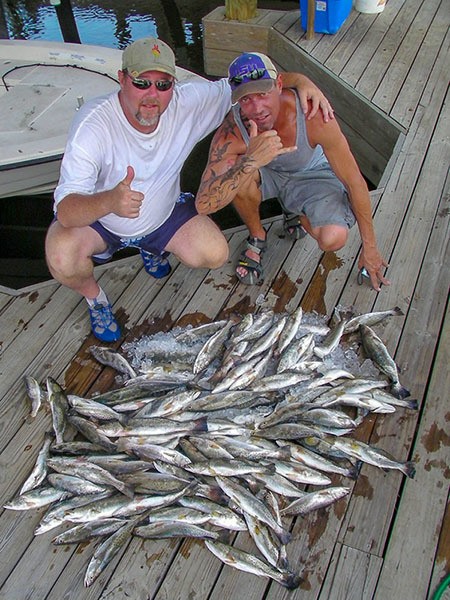
I did my best to put customers on a lot of fish, and using the Louisiana Hustle was my favorite strategy to get it done.
I thought I was pretty good at fishing and that the Louisiana Hustle was the best way to find and catch speckled trout -- or any inshore species.
But I was dead wrong...
Because this routine worked for me, I loathed the idea of dickering with small details like lure color and line size, because I felt:
- It didn't make a big difference.
- That doing so was a waste of time.
But I really wasn't fulfilling my potential as an angler, because all I caught were fish ready to bite an Inshore Rig.
If I were truly good at fishing, I'd have been able to recognize and catch all the other "types" of fish.
Otherwise, what I was doing wasn't fishing, it was trying different spots as quickly as possible.
This came to light and I have since made the journey to become a better angler.
It's well documented in this blog, things like jigging with casting tackle, sight fishing for redfish and competing in tournaments.
The most recent improvement in this journey has been the application of Three Percent Theory.
What is Three Percent Theory?
It is the idea that small variances in tackle or technique can add up to catch a significant amount of fish.
Below are examples of small variances that influence how soft plastics move through the water.
1. Paddle Tail Shape & Size
We love our 3" soft plastics, but they're not all exactly the same.
Many have different shape and size paddle tails that alter how a jig will fall in the water column.
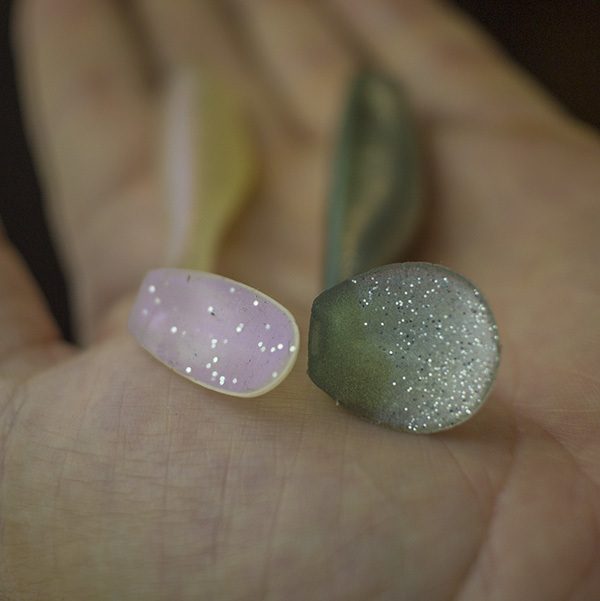
Shape and size of a paddle tail will dictate how it falls, wiggles and thumps through the water.
2. True Jighead Weight
Another example would be weighing jigheads on a scale and fishing them according to their true weight, and not what the manufacturer labels them as.
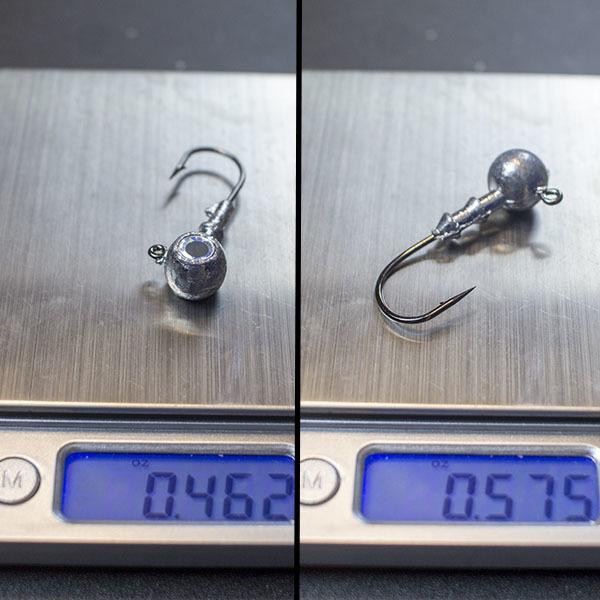
Both are advertised as being a half ounce, but they are slightly different and knowing that is key to achieve consistent presentations.
3. Soft Plastic Buoyancy
The buoyancy of material used to make soft plastic lures is not the same, either.
Both lures below are from different manufacturers using different material to pour their soft plastics.
One sinks and the other floats, changing how they are presented in the water column.
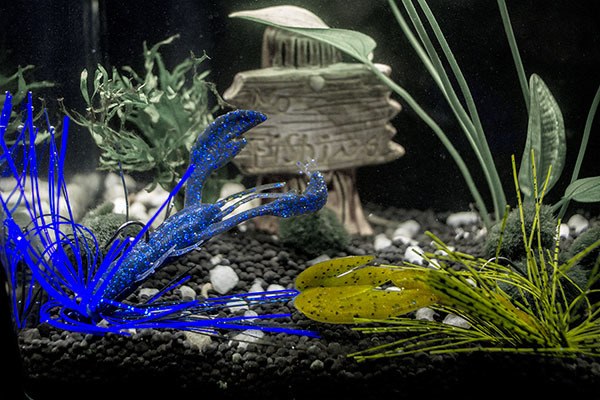
The Cajun Lures Crackin' Craw (left) floats whereas the Zoom Super Speed Craw does not. How can you use these properties to achieve any desired presentation?
More Than Just Lures
Of course, there's more to this than tweaking lures.
Things like drift speed (0.5 mph vs 1.1 mph) can make all the difference in the world to a speck or red.
How does Three Percent Theory catch more fish?
It's called "3% Theory" because it's the idea that a small variance could catch 3% more fish.
This isn't a lot, but make enough tweaks and you'll have a lot more than 3% on your hands, like something closer to 24%.
That's the difference between catching 18 specks or an entire limit, and we all know that people tend to remember limits more than near-limits.
Hardcore Application of 3% Theory
When it comes to targeting more selective species, like black bass, 3% Theory is the only way to consistently succeed.
Dead serious: You should study bass fishing in order to learn new concepts and techniques that will help you catch more speckled trout and redfish.
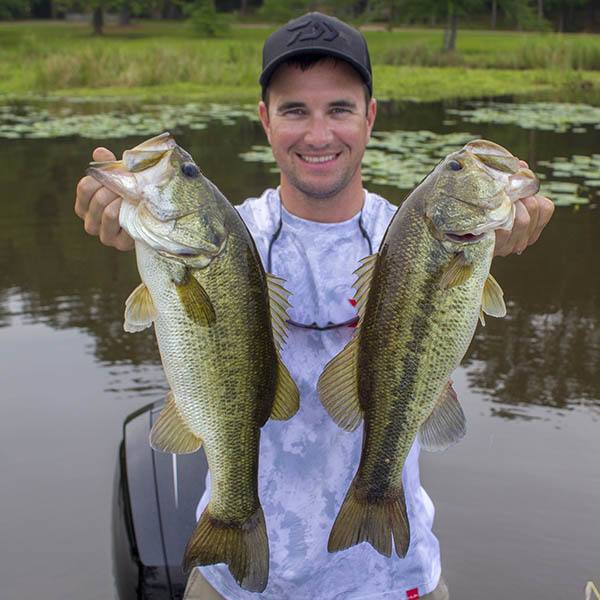
I enjoy targeting "green trout" to hone my angling skills and knowledge.
See How To Apply This Theory
The proof is in the catches you see in my fishing reports and on my YouTube channel.
Or this blog post about fishing the Long Rocks, it is loaded with Three Percent Theory.
I cannot count the times we've been sitting next to other boats throwing live shrimp and watched them catch nothing but trash fish while we jacked trout one after the other on artificial lures using Three Percent Theory.
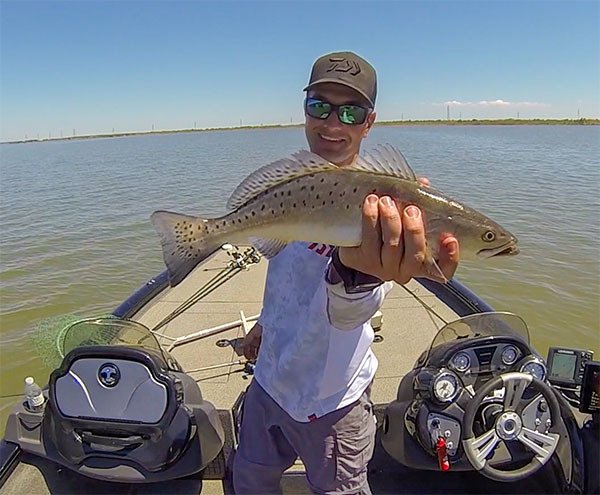
Conclusion
Everyone loves catching fish!
However, what beats catching fish is catching fish trying something new.
Going to the same spots and doing the same thing eventually becomes old.
Becoming better at fishing is where bonafide satisfaction comes from.
If that weren't true then this blog and LAFB Elite would not exist.
But they do, and there's tons of knowledge here for anyone to benefit from, and I hope that you take time to enjoy successfully learning and applying Three Percent Theory.
Thanks for reading, and be sure to comment below if you have anything to add or a question to ask!
Tight lines, y'all.

Hey Ray, thanks for commenting.
Where are you fishing out of? I feel strongly that if you’re not catching fish at all that it has little to do with 3% Theory but instead more basic things that are being overlooked.
Thanks for sharing your knowledge. I have been fishing for years and really never been much a fisherman. I just went to go . Been trying to learn why my success rate has not been so good. .
No, not at all.
Hehe good idea. Something I do is mark my crankbaits on the belly with their depth range if it’s not already marked. I don’t think it upsets the fish.
Amen!
Never though of it that way. But the amount of casts and presentations with plastics compared to live definitely makes sense. It’s just so much more rewarding to fool them and give them what they think they want rather than what they do want!
Glad you liked it, Trevor!
I hear you 100% and, after learning casting tackle & artificial lures, find fishing with shrimp to be more difficult.
Just a couple days ago a bladed jig caught more redfish than live shrimp or gold spoon.
Normally I attribute something like that outfishing live shrimp because you’re casting it more often, and retrieving it back, ultimately covering more water and far more likely to get it in front of a redfish.
But that redfish refused the gold spoon and hit the bladed jig surprised me, as they’ve always been pretty one-dimensional in my eyes.
Time will tell.
Thanks for commenting!
Awesome blog devin, that being said I can relate to a point. I too pay close attention to the little things, such as different brand plastics and how the swim/sink/float, and how they are presenting themselves in the water on different brand jig heads. Which I have always thought gave me an advantage over some of my fishing buddies who have very different outlooks. Many of them are the said “live shrimp under a cork” kind of guys and I find it pretty amusing to watch them gripe and grunt over those hard heads that they cant seem to stop catching, even after I’ve reeled in multiple trout/redfish, they still seem to stick to the shrimp because it’s “the easy way” which drives me nuts sometimes. The more I fish the more infatuated I get in learning the habbits of these fish and catching them on new baits in different manners, it’s just 100x more rewarding to me. Again, awesome blog.
Just wanted to make sure you saw my reply, thank you!
I hear you 100% on crossing open water in heavy wind. Used to do it, but no longer a fan. It’s tough on you and your boat, makes fishing more expensive.
It’d be great if you joined LAFB Elite! The discounts and reel buying guide will pay for itself right away, so that’s something to consider.
Thanks, Jerry. I appreciate you commenting.
I enjoyed reading your 3% theory blog. As I am inshore fisherman who is fishing the barrier island out of Cocodrie. I often wonder as I pounded in the waves traveling fifteen miles to get there how many fish I passed up?
So I am now thinking about canceling my gym membership for a LAFB Elite membership.
That’s awesome, your dad sounds like a guy I could like!
Thanks for commenting, Bobby.
My Dad was the best fisherman I knew and I studied what he did. He was always prepared, always did the little things (correct line size, jig head, etc). Each of these little things added up to continued success and limits.
Enjoy your column. Thanks Devin!
Hey Chas, thanks for commenting. Glad you liked it.
Thanks, Paul! Glad you agree.
Spot on bud
Its all in the details. Great topic and explanation!
Hey there, thanks for commenting.
Look, you just asked a lot but I’ll do my best to answer them.
I think you’re misunderstanding the purpose of using different jighead weights.
It has nothing to do with the speed of lure, but the rate of fall and, most importantly, getting to the bottom of the water column.
I see you’re a member of LAFB Elite and am telling you that it’s in your interest to go over the Effective Fishing module inside Inshore Fishing 101.
In fact, if you haven’t gone over the entirety of Inshore Fishing 101 then you need to knock that out.
Otherwise I cannot possibly begin to explain those concepts here in commenting as well as they are inside IF101.
No, you are not always constantly retrieving.
There are different techniques and for that you really ought to go over Inshore Fishing 201, especially the Pontchartrain Pop since we’re pretty much talking jigs here.
As for paddle tails and straight tails…
Try one when the other isn’t working.
Please forgive me as I am not trying to be a smartass, instead I am trying to get you to think a certain way that will help you arrive to solutions on your own.
It literally takes mere seconds to reach in your pocket, pull out X soft plastic and thread it onto a jighead.
It’s really hard to give you realistic and tangible answers for your other questions because it all depends on so many things that are outside the scope of text in commenting.
If they weren’t, I wouldn’t spend so much time recording and editing hours upon hours of video.
I can tell you’re THIRSTY, you WANT TO KNOW and have that FIRE to get out there and fish your ass off and learn.
This is good, but you should really complete Inshore Fishing 101 and utilize the LAFB Elite Community, because they do such a great job of explaining the answers you’re looking for in the context of the conditions at that moment in time.
Thanks, I’m really glad you brought this up.
No sweat, Gary. Thanks for reading.
You’re welcome, Shane. Thanks for commenting.
Good question.
I like to look at my jerkbaits and suspending baits while they’re tied on to see how they float, suspend or sink….whatever it is they’re supposed to do.
Some lures are complete trash, like they fall backwards.
Others only sit right with the right fishing line or modifications.
Hope that makes sense.
What else do you measure in lures? Hard baits?
Always thought plastic was plastic and that a cast was a cast. Now I understand better how you caught those specks last January. Thanks for writing this!
This is a very interesting idea, great article Devin. I love how you take things to the next level, fishing really is more than just fishing. Thank you
Never gotten this technical about weights. Reads like I should be though. I understand how weight causes lures to move differently and how water temp helps dictate speed to an extent. What other signs can I look for on the water to help know what speeds I should be moving my baits thru the water column to make look more realistic? Or is weight really only tied to depth when choosing the correct size? Lighter =shallower/Deeper =heavier Retrieving at the same speed?
A bit off topic but also like when to use a paddle tail and when to use a straight? By observing the bait n the area I guess?(Lure profile post touches on the topic some) What to look for when combining the two? Weight to body profile? Should one profile move faster than the another?
LOL Glad to know I’m not the only one.
Yes, I do mark them, but in their respective tackle trays.
Thanks for commenting, John.
You’re always there and I appreciate that!
DAMN…I thought I was the only one weighing jigheads on well calibrated scale! THANK YOU
ps: with a ‘fine-point’ sharpie that weight is written on the jighead as reference